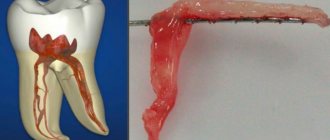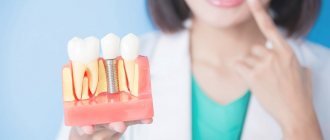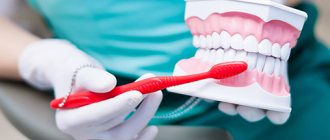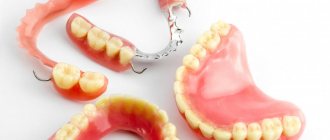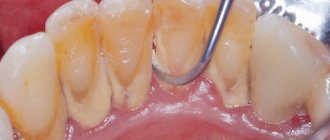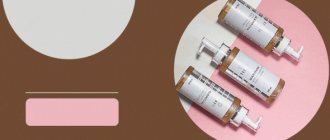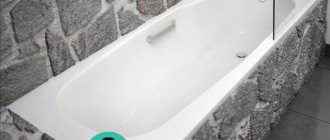28.10.2019
Removing or extracting a tooth is an unpleasant procedure. After the operation, tissue healing awaits. How many days will it take for the sutures to be removed from the gums, what can and cannot be done before and after removal of the sutures - such questions torment patients.
What not to do after dental implantation
First of all, you need to pay attention to the prohibitions during the rehabilitation period. Most of them act in the first one or two weeks when the wound is healing. Some actions can cause bleeding, suture rupture, and hematoma formation.
Forbidden:
- eat spicy, hard, hot or too cold food;
- touch the area of the wound or the installed implant;
- drink through a straw;
- chew on the side of the jaw where surgery was performed;
- use a toothbrush with stiff bristles;
- fly by plane, dive into the depths with scuba gear, especially when performing a sinus lift;
- smoke;
- drink alcoholic beverages;
- high physical activity: sports, heavy physical labor;
- overheat the body: go to the bathhouse, sauna, sunbathe on the beach, take a hot bath;
- supercool;
- ignore taking prescribed medications.
The rules are especially relevant after flap surgery, which is performed during the classical installation of implants. However, even with a minimally invasive procedure using one-stage protocols (one-step, basal), you should not neglect medical recommendations.
Treatment of a tooth under a crown without removing it
In dental practice, there are cases when it is possible to cure a tooth without removing the crown. Usually we are talking about secondary caries and simple endodontic manipulations, carried out through a hole, which is then filled with a composite material. In some cases of surgery, such as cyst removal, the surgical site is accessed through an incision in the gum. In this case, the product usually still has to be removed for additional manipulations.
How to relieve swelling after dental implantation
After surgery, the soft tissue in the surgical area swells. This is a normal reaction of the body. Swelling can spread to the tongue, chin, cheeks, causing the face on the side of the installed implant to look swollen. In this case, the patient feels numbness, but normally it should last no more than two or three days. If the symptom lasts longer, it may indicate nerve damage. The most effective way to relieve severe swelling is a cold compress. You can use ice or frozen food from the freezer. Ice is wrapped in a towel and applied to swollen tissues for 10 - 15 minutes. Carry out the procedure several times a day. Do not overdo it with an ice compress, otherwise you can overcool the tissues.
You need to exclude foods that increase swelling from your diet. You cannot eat spicy, salty foods, add spices to your food, or drink coffee. For example, the latter product increases blood pressure, blood rushes to the head, swelling intensifies, and bleeding from the wound may begin.
If the swelling does not go away within three or four days, the pain does not subside, redness of the mucous membranes is observed, pus and fistulas appear, then these are symptoms of peri-implantitis. It is necessary to urgently consult a doctor. Self-treatment can worsen the situation, including implant rejection.
Types of deep bikini hair removal
Mechanical hair removal in the deep bikini area is usually done in two ways: wax and sugar paste. Each of these methods has its own advantages and disadvantages.
Waxing
A method that at one time became a classic way of dealing with unwanted hair. It consists of applying heated wax to the desired area of the skin according to hair growth and removing it along with the hair according to their growth using a special strip that is applied over the applied wax. Remaining wax is removed with oil.
This method is faster than the sugaring method, but after it many people notice the problem of ingrown hairs. In addition, wax hair removal is not able to deal with hard-to-reach areas and short hairs as thoroughly as sugar paste.
Sugaring
A modern and more popular way to combat unwanted hair in the deep bikini area. You can buy sugaring products in salons and beauty care stores or make your own.
The sugar paste used for the procedure is applied against the hair growth and is struck in jerks along the hair growth without the use of strips. Sugaring does not leave irritation , the remaining paste is easily washed off with plain water. This method is very effective; after it, ingrown hairs are much less common, and if you properly prepare for the procedure, they do not occur at all.
The most severe pain occurs during the first procedure. With repeated sessions, the pain becomes significantly less. In addition, the habit of doing sugaring regularly helps to completely get rid of the fear of pain. It is important to note that before your first trip to sugaring, the length of the strips should be at least 8 mm.
If you are planning to do sugaring of the bikini area for the first time, it is better to entrust this procedure to a specialist who will quickly and accurately handle this task. In addition, at an appointment with a hair removal specialist, you will be able to ask all your questions that are likely to arise during the procedure.
Antibiotics and other medications after dental implantation
Antibacterial drugs are prescribed to prevent the development of infection. Some doctors believe that you should only take antibiotics if you are at high risk, for example, if your immune system is reduced, you have chronic diseases of the upper respiratory tract, periodontitis, or you have had several implants installed at once. However, many dentists insist on the need for antibiotic therapy.
For the purpose of prevention, broad-spectrum drugs are prescribed: penicillins, cephalosporins. The doctor can prescribe any available drugs: Lincomycin, Amoxiclav, Flemoxin, Tsifran ST. Antibiotics must be taken strictly according to the schedule, in the appropriate dosage.
To prevent or relieve inflammatory processes, ointments or gels for external use are prescribed: Metronidazole, Solcoseryl. The latter drug improves metabolic processes in tissues and promotes rapid healing of wounds.
In the first weeks of the rehabilitation period, it is recommended to rinse your mouth after eating with antiseptic solutions: Chlorhexidine, Miramistin and their analogues. You can prepare decoctions of medicinal herbs: oak bark, chamomile, calendula, sage.
How are sutures removed?
Preparation for the procedure begins with informing the patient about the upcoming procedure and its necessity. As a rule, this happens on the eve of the event.
Before removing the sutures, the wound surface is treated with an antiseptic solution. Further manipulations are carried out using surgical scissors and anatomical tweezers.
During this operation, the end of the nodule is grabbed with tweezers, lifted and pulled in the direction opposite to the one in which the wound was sutured. When 2 mm of white thread appears above the surface of the skin, it is carefully intersected and very carefully removed.
After completing these manipulations, the integrity of the wound is checked. Next, in order to prevent infection and speed up the healing of the skin, the postoperative scar is treated with an antiseptic solution, after which a sterile fixing bandage is applied to it.
Useful information on the topic:
- Calling a surgeon to your home
- Callus
- Abscess on finger
- Ingrown nail
- Felon
- Wart removal
- Removal of condylomas
- Abdominal ultrasound
- Removal of papillomas
- Treatment of bedsores
- X-ray
- Removing stitches
- Gastroscopy
- Colonoscopy
What you can and cannot eat after dental implantation
On the first day of surgery, you can eat after three or four hours, when the wound has healed. Food should be liquid or pureed, at a comfortable temperature. You should not eat foods that can injure the mucous membranes. The diet must be followed for at least three weeks.
During the recovery period you need to eat:
- soft or liquid food: you can puree foods with a blender, buy baby food in jars;
- foods rich in calcium and vitamins;
- warm food;
- drink plenty of fluids.
You cannot eat seeds, nuts, sour, salty, spicy foods, sweets, alcohol, coffee, hot or cold foods. Smoking is strictly prohibited.
Why is tartar dangerous?
Hard dental plaque is a conglomerate of complex composition, formed from microscopic food debris and iron and phosphorus compounds contained in saliva. In fact, the stone grows into the periodontium, and it is not possible to remove it on your own. First, a thick plaque forms on the teeth, which gradually hardens and turns into stone.
Dental plaque promotes the proliferation of pathogenic flora, resulting in caries, gingivitis, and periodontitis. A favorable environment causes rapid growth of pathogenic bacteria and further damage to the periodontium.
The main signs of the appearance of tartar include:
- noticeable stripes, dots, spots of brown (in shades) color on the enamel;
- unpleasant, “heavy” odor from the mouth;
- internal sensation of enamel roughness.
The smile takes on an unaesthetic appearance, and the smell forces the interlocutor to stay away.
It is especially important to monitor the condition of teeth and remove tartar in a timely manner for those who smoke and drink strong tea and coffee. In this case, nicotine and tannins enter into the process of stone formation - deposits form much faster and acquire a characteristic dark brown color.
Important. The end result of an irresponsible attitude towards tartar is tooth loss.
When are sutures removed after dental implantation?
The date of suture removal is determined by the doctor, focusing on the condition of the gum tissue. Usually the procedure is prescribed after 10 - 14 days. If the wound does not heal well, this time can be increased to three weeks.
Sutures should not remain in the gums for too long, as this can lead to the development of inflammatory processes. Self-absorbing suture material does not need to be removed.
How to remove stitches:
- treat the oral mucosa with antiseptics;
- cut the thread stitches in half;
- remove the cut material with tweezers;
- antiseptic treatment is repeated;
- apply a sterile bandage.
Small wounds in the gums heal after one or two days. At this time, discomfort and pain may occur.
If the stitches come apart, they are removed immediately. This phenomenon usually occurs with severe inflammation.
Why is the wound sutured after pulling out the figure eight?
Wisdom teeth are very insidious and often lead to serious problems. Pulling it out most often resembles an operation. Since the roots of the unit go deep into the gum and can be ornate, tortuous, soft tissue is often excised to extract them. After all solid debris has been removed from the depths of the tissue, the wound is sutured. This is done in order to:
- prevent bleeding;
- protect the blood clot formed in the wound from injury;
- protect the operated area from the accumulation of food debris;
- minimize the risk of damage to the operating area;
- speed up regeneration processes.
It is believed that applying sutures after wisdom tooth removal reduces the likelihood of infection by approximately 90%. This is explained by the fact that pathogens cannot penetrate into the deep layers of the wound.
How to brush your teeth after implantation
One of the most important issues concerns oral hygiene in the postoperative period. Teeth should be brushed carefully, avoiding the operated area. It is recommended to use a brush with soft bristles, which cannot injure the mucous membranes of the mouth. Hygiene procedures should be carried out in the morning and evening. When brushing your teeth, you should not forget to remove plaque from the tongue, palate and the inside of the cheeks.
In the first week after eating, it is recommended to rinse the mouth with antiseptics, and then with mouth rinses. When the wound has healed, you can use brushes, dental floss, and irrigators to clean your teeth.
How braces are removed at DDClinic
Removal of a classic ligature apparatus begins with the removal of rings and locks, continues by removing the arches and detaching the braces from the teeth, and ends with cleansing the tooth enamel from the remnants of the fixing material. The whole procedure takes a few minutes.
In the case of a non-ligature system, the lock on each bracket is first opened, and then the same manipulations are performed as when removing the ligature system.
Lingual braces are attached to the inside of the teeth, so they take a little longer to remove - approximately 30 minutes.
Why do headaches occur after dental implantation?
Surgery is accompanied by various ailments, including headaches. This is due to the activation of the body's immune system. In some patients, along with pain, body temperature rises.
Normally, the head may hurt for three days. At this time, you need to take painkillers. If the symptom persists for more than four days, it may indicate inflammation around the implant or an allergic reaction to metals.
If, in addition to pain in the mouth, there is a metallic taste, bitterness, sleep is disturbed, and constant weakness is felt, then you should consult a doctor.
When is caries painful to treat?
People who have an individual intolerance to anesthetics experience discomfort when treating diseased teeth. If you are allergic to a painkiller, the doctor cannot give an injection - this is dangerous to health and can lead to anaphylactic shock, which can be fatal.
But allergy sufferers don't need to worry. The therapy will take place in more comfortable conditions if they give preference not to a drill, but to more modern installations. So, an excellent solution would be to use a laser or perform dental treatment without drilling, using the method of chemical dissolution of the affected tissue. Then there will be no pain during cleansing of the carious cavity.
Unpleasant sensations after installing a dental implant
Since the gum tissue is severely injured, the patient feels pain for several days. There may be a feeling of fullness and pressure. This is considered normal, since a foreign element was installed in the gum. Unpleasant sensations can persist for one, two weeks or longer, it all depends on the individual characteristics of the body.
Some patients complain that the installed chewing teeth put pressure on the tongue. This may be a subjective sensation, since after removal of the painters the implantation site was empty. Perhaps an error was made during the manufacture of the prostheses. To clarify the issue, you need to consult a doctor.
Content:
- Why is the wound sutured after pulling out the figure eight?
- Classification of seams
- How long do you need to walk with non-absorbable sutures?
- How long does it take for self-absorbable sutures to dissolve?
- What complications can you encounter after suturing?
- Recommendations for patients
A dental surgeon applies sutures after removing a wisdom tooth if the intervention was very complex and serious injury to the gums occurred.
Often, specialists insist on suturing a wound, even if it is small, in order to minimize the likelihood of infection. Let's consider what material doctors use when suturing after tooth extraction, whether it needs to be removed in the future, and how to properly care for the injured area.
How long does it take for dental implants to take root?
The processes of osseointegration depend on various factors: the patient’s health status, implantation method, type, brand of implantation system. Conventional classical implants take root in the lower jaw within 3.4 months, in the maxillary region - 5.6 months, since the upper jaw bone is less dense.
Some premium implant models have a special coating that accelerates osseointegration processes. If dental structures are made of pure titanium, then healing occurs faster.
Why do you need to remove crowns?
- The need to treat the tooth that is under the crown. Painful sensations and an unpleasant odor are signs of the development of pulpitis or even periodontitis (if the tooth has not been depulped). Most often, treatment occurs without removing the crown, but everything depends on the qualifications of the doctor and the clinical case. A hole is drilled in the crown through which diagnosis and treatment are carried out.
- Destruction of the material on which the crown was installed. The orthopedic structure begins to wobble, causing discomfort while eating and talking. Sometimes, in order to re-fix the crown, you can do without damaging the orthopedic structure.
- Re-prosthetics. These are cases when patients themselves want to replace them with a better quality crown.
- Poor quality design. If the crown is cracked or does not fit well to the neck of the tooth and affects the bite, it must be replaced with a new one.
- The service life has expired.
What else do patients ask about after implantation?
Since the installation of implants is a surgical operation, people are interested in many questions about the rehabilitation period.
- Does it hurt to remove stitches? The procedure is carried out after the wound has healed, so removing thin threads does not cause pain. If the patient experiences severe fear, the doctor may treat the suture area with an anesthetic gel or spray.
- Why is smoking prohibited after implantation? Nicotine constricts blood vessels, slows down metabolic processes, and impairs tissue nutrition. This negatively affects wound healing and implant healing. If the patient cannot quit smoking for a long time, the doctor has the right to refuse surgery.
- Why is Dexamethasone prescribed after implantation? The drug can be used as a powerful pain reliever. If the risk of inflammation is very high, then Dexamethasone is prescribed along with antibiotics. The drug quickly stops inflammatory processes and alleviates acute symptoms.
- How long does a tooth hurt after implant placement? Painful sensations persist for 3 - 5 days. If the pain is severe, you can take painkillers.
Anesthetics in dentistry
The doctor decides which type of painkiller is suitable for a particular patient, taking into account the specifics of the clinical situation. "Lidocaine", "Mepivacaine", "Trimecaine" and "Articaine" are applicable if the intervention is simple. Their effect lasts for more than an hour. Etidacaine and Bupivacaine are indicated for serious problems. The dentist introduces them if it is clear in advance that the treatment will take a long time.
It is important that the selected anesthetic meets the basic requirements:
- was non-toxic;
- did not cause tissue irritation;
- had a minimal number of side effects;
- provided pain relief for the required period of time;
- did not dilate local vessels;
- completely eliminated the pain caused by medical manipulations.
Thus, in order to answer the question “Does it hurt to treat teeth?” was negative, it is very important to contact the dental clinic in a timely manner. In the early stages of caries, all necessary procedures are absolutely painless, since the most sensitive part of the tooth - the pulp - remains intact. The doctor simply removes the darkened hard tissue and closes the resulting cavity with a filling.
By undergoing preventive examinations at a dental clinic once a year, you can avoid many serious problems and extend the life of your teeth.
Is it painful to remove stones from teeth? Feelings during cleaning
Tartar removal is a unique procedure that allows you to completely remove hard and soft deposits from the enamel. The first thing the patient feels after the dentist’s work is completed is the special freshness and cleanliness of the oral cavity.
The main question that interests everyone who has been recommended to clean the stones on their teeth is how painful it is. In most cases, visiting the dentist is always associated with unpleasant sensations and the expectation of pain. Although modern dentistry offers many methods of effective anesthesia and the latest treatment methods with minimal trauma.
Important. Go to brush your teeth boldly and without fear. We guarantee that after the first procedure you will brush your teeth constantly.


